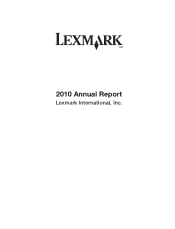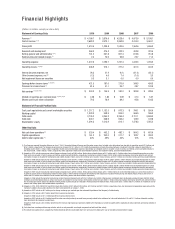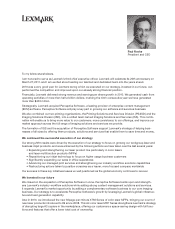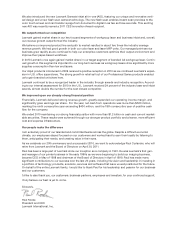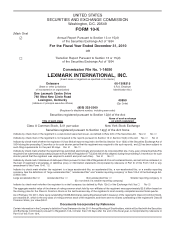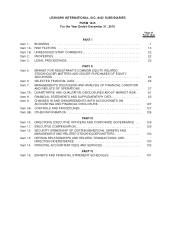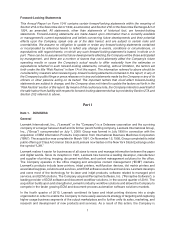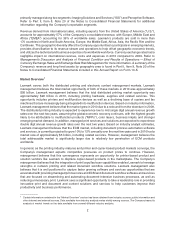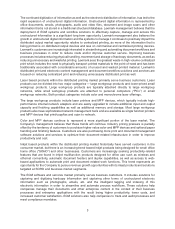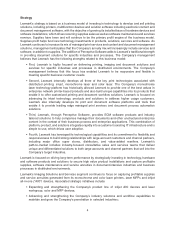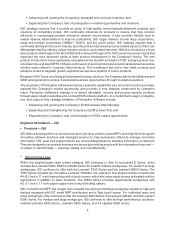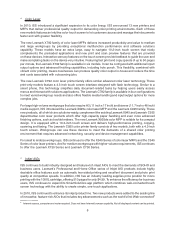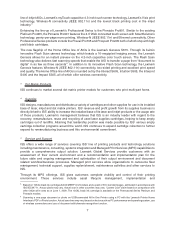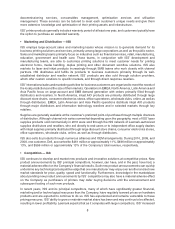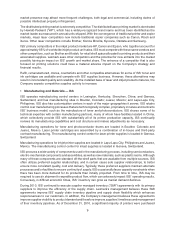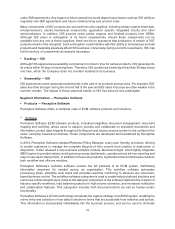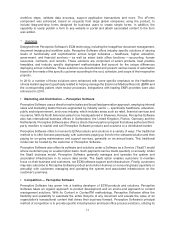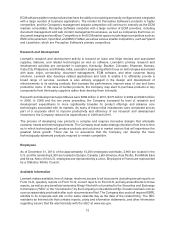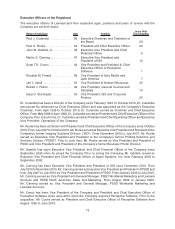Lexmark 2010 Annual Report Download - page 9
Download and view the complete annual report
Please find page 9 of the 2010 Lexmark annual report below. You can navigate through the pages in the report by either clicking on the pages listed below, or by using the keyword search tool below to find specific information within the annual report.The continued digitization of information as well as the electronic distribution of information, has led to the
rapid expansion of unstructured digital information. Unstructured digital information is represented by
office documents, emails, photographs, audio and video files, document and image scans and other
information that is not stored in a traditional structured database. Lexmark management believes that the
deployment of ECM systems and workflow solutions to effectively capture, manage and access this
unstructured information is a significant long term opportunity. Lexmark management also believes the
growth in unstructured digital information and the systems to manage it continues to positively impact the
distributed output market opportunity relative to centralized printing, as more of the information that is
being printed is on distributed output devices and less on commercial and centralized printing devices.
Lexmark’s customers are increasingly interested in streamlining and automating document workflows and
business processes in order to reduce costs and/or improve customer service. Improving business
processes includes reducing physical handling, movement and storage of hardcopy documents, as well as
reducing unnecessary and wasteful printing. Lexmark sees the greatest waste in high volume centralized
print which includes the need to physically transport printed materials to the point-of-need and has been
traditionally associated with considerable amounts of unused and wasted printed material. Lexmark’s
distributed print and electronic content management and document workflow solutions and services are
focused on reducing centralized print and reducing unnecessary distributed print as well.
Laser based products within the distributed printing market primarily serve business customers. Laser
products can be divided into two major categories — large workgroup products and lower-priced small
workgroup products. Large workgroup products are typically attached directly to large workgroup
networks, while small workgroup products are attached to personal computers (“PCs”) or small
workgroup networks. Both product categories include color and monochrome laser offerings.
The large workgroup products include laser printers and MFP devices, which typically include high-
performance internal network adapters and are easily upgraded to include additional input and output
capacity and finishing capabilities as well as additional memory and storage. Most large workgroup
products also have sophisticated network management tools and are available as single function printers
and MFP devices that print/copy/fax and scan to network.
Color and MFP devices continue to represent a more significant portion of the laser market. The
Company’s management believes that these trends will continue. Industry pricing pressure is partially
offset by the tendency of customers to purchase higher value color and MFP devices and optional paper
handling and finishing features. Customers are also purchasing more print and document management
software solutions and services to optimize their document-related infrastructure in order to improve
productivity and cost.
Inkjet based products within the distributed printing market historically have served customers in the
consumer market, but there is an increasing trend toward inkjet products being designed for small office
home office (“SOHO”) and other businesses. Customers are increasingly seeking productivity-related
features that are found in inkjet multifunction products designed for office use such as wireless and
ethernet connectivity, automatic document feeders and duplex capabilities, as well as access to web-
based applications to automate print and document related work functions. This trend represents an
opportunity for the Company to pursue revenue growth opportunities with its inkjet products and solutions
targeted at SOHO and business market segments.
The ECM software and services market primarily serves business customers. It includes solutions for
capturing and digitizing hardcopy information and capturing other forms of unstructured electronic
information such as photographs, emails, etc. and the intelligent tagging and indexing of this
electronic information in order to streamline and automate process workflows. These solutions help
companies manage their documents and other enterprise content in the context of their business
processes and enterprise applications with the result being higher productivity, lower costs, and
increased customer satisfaction. ECM solutions also help companies to track and audit processes and
meet compliance mandates.
3

